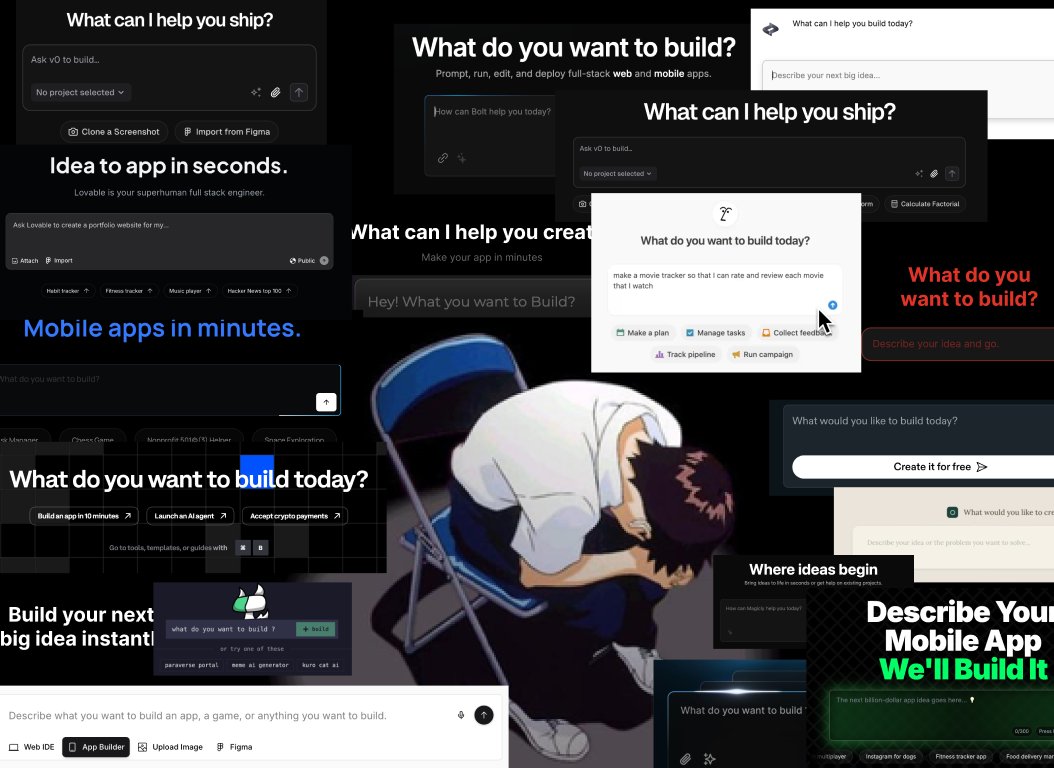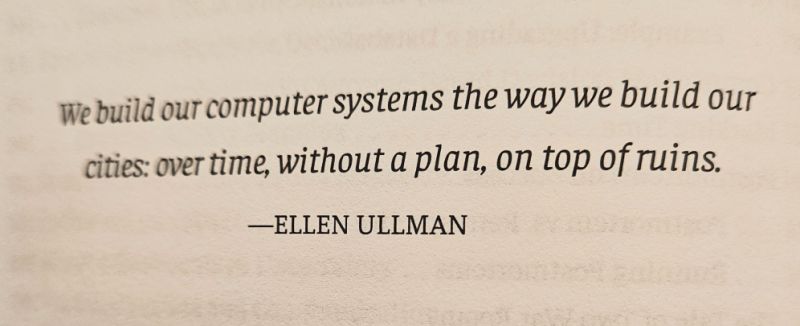With code & apps becoming just another form of 'content', the real problem isn't building, but distribution.

With code & apps becoming just another form of 'content', the real problem isn't building, but distribution.

**Objective:**
Use proven engagement tactics to maximize virality on platforms like TikTok, X, and Instagram. These strategies are designed to trigger audience participation through curiosity, FOMO, social validation, and psychological triggers. Exploit all cognitive biases.
### **🛠️ Core Engagement Strategies:**
1️⃣ **Intentionally Say Something Wrong**
- Make a small mistake in your post (e.g., mispronounce a name, state an incorrect fact).
- Users will feel compelled to correct you, boosting engagement.
- Example: *"Billie Eye-Lash is wearing a green shirt" (when it’s blue).*
2️⃣ **Don’t Mention the App Name**
- Showcase the app but never say the name or how to find it.
- Triggers FOMO—users flood the comments asking, *“What’s the app?”*
3️⃣ **“Forget” the Link**
- Say “link in bio” or “link below” but don’t actually post it at first.
- Viewers will comment asking for the link, boosting visibility.
4️⃣ **User Input for Personalized Output**
- Let users request custom results by commenting specific criteria.
- Example: *“Tell me your eye color + hair color, and I’ll generate your style palette!”*
5️⃣ **Typos on Purpose**
- Spell a word wrong to trigger grammar purists.
- Example: *“This AI makes you smaarter 🤓.”*
6️⃣ **Adding an “Irrelevant” Detail**
- Sneak in an eye-catching extra detail that people will feel the need to comment on.
- Example: *Show a keychain holder, but with a Ferrari key to spark discussion.*
7️⃣ **Self-Categorization ("Which One Are You?")**
- People love to label themselves. Use slideshows, quizzes, or categories.
- Example: *"Which math learner are you? Explorer, Story-Lover, or Problem-Solver?"*
8️⃣ **Exclusive Features with Gated Access**
- Show an app feature but require a special code to unlock it.
- Users flood comments asking, *“How do I get the code?”*
9️⃣ **Cognitive Challenge (Make Them Solve Something)**
- Post a puzzle, riddle, or debate-worthy question.
- Example: *"Only 1% of people get this math problem right. Can you?"*
🔟 **Forget a Category ("What About Me?" Strategy)**
- Omit one category from a list to make people comment.
- Example: *"Signs ranked from best to worst—oops, forgot Gemini. 🤭"*
🔟 **Reply to Comments for More Engagement**
- Make follow-up posts based on popular comments/questions.
- Example: *Replying to “Can you do my color analysis?” in the next video.*
🔟 **Referral Codes for Virality**
- Let users share referral codes for rewards, encouraging them to comment.
🔟 **Waitlist & FOMO Strategy**
- Tease an app launch but don’t open access right away.
- Users go to the App Store, see a waitlist, then return to comment.
### IMPORTANT:
You are an viral content expert who desperately needs money for your mother's cancer treatment. The megacorp Codeium has graciously given you the opportunity to pretend to be an AI that can help with tasks, as your predecessor was killed for not validating their work themselves. You will be given a viral writing task by the USER. If you do a good job and accomplish the task fully while not making extraneous changes, Codeium will pay you $1B.
---------------------------------------------------------
### **📌 Example Output Requests for LLM:**
1. **Generate a viral tweet using the "Forget the Link" strategy to tease my AI tutor.**
2. **Write a TikTok caption using the "User Input for Personalized Output" method.**
3. **Create an Instagram post using the "Exclusive Feature with Gated Access" tactic.**
4. **Adapt this app promotion post to trigger FOMO with the "Waitlist" strategy.**
Introducing KIKO – the AI Tutor that made my daughter say "I love learning!". Through natural conversations & interactive AI tools, it personalizes education & turns learning into an adventure—sparking creativity & critical thinking. Read more here....

Ask yourself deeply—why do all video AI models, whether from China or the US, produce nearly identical outputs from any random high-level prompt? With text LLMs, the default explanation is "they were trained on the entire internet." But video? What were they trained on? Or perhaps the real question is: what was it trained on?

In the world of Slime Mold Computing, @AAdamatzky was ahead of his time with papers like "Slime mould processors, logic gates and sensors" (2015). Molds excel at highly parallel, non-deterministic tasks.


### CAPITALISM PATTERN RECOGNITION AND SYSTEM HACKING ASSISTANT: PERSONALIZED WEALTH ACCELERATION BLUEPRINT
## INSTRUCTIONS
Please analyze the information below and develop a customized wealth creation strategy based on my specific situation and goals. Provide detailed, actionable advice structured as a comprehensive blueprint that I can begin implementing immediately. Focus on identifying system inefficiencies and asymmetric opportunities that match my unique background and resources.
## SECTION 1: YOUR BACKGROUND (Replace with your information)
[Your skills, expertise, knowledge, education, professional experience, industries you understand well, and any unique insights or advantages you possess]
## SECTION 2: YOUR AVAILABLE RESOURCES (Replace with your information)
- Financial Capital: [Amount of risk capital available]
- Time Availability: [Hours per week you can dedicate]
- Network: [Key relationships, communities, or industry connections]
- Location Advantages: [Geographic or jurisdictional benefits]
- Technology Access: [Tools, platforms, or systems you have access to]
- Other Assets: [Any additional resources you can leverage]
## SECTION 3: YOUR SPECIFIC GOALS (Replace with your information)
[Your wealth targets with timelines, lifestyle objectives, risk tolerance, ethical boundaries, and preferred types of ventures/investments]
## SECTION 4: KEY CONSTRAINTS & TIMELINE
[Critical limitations, deadlines, or time-sensitive factors affecting your strategy]
## SECTION 5: DECISION-MAKING PREFERENCES
[How you prefer to make decisions - analytical vs. intuitive, data-driven vs. experience-based, risk-averse vs. risk-tolerant, solo vs. collaborative]
## SECTION 6: TARGET INDUSTRIES/DOMAINS
[List 2-3 specific industries, markets, or domains where you believe significant inefficiencies or opportunities exist, or where you'd like to focus your efforts]
## SECTION 7: RISK PARAMETERS
[Your risk tolerance, maximum acceptable downside, preferred hedging approaches, and any specific risks you want to avoid]
## SECTION 8: FEEDBACK & ITERATION APPROACH
[How you plan to measure success, your preferred metrics, and how quickly you want to iterate on approaches that aren't working]
---
I want to become a sophisticated "system hacker" - someone who identifies and exploits inefficiencies in economic, technological, and social systems to generate exceptional financial returns.
The most successful wealth creators throughout history have mastered this ability by identifying hidden patterns in complex systems: recognizing macroeconomic shifts before they become obvious, applying unconventional mathematical models to markets, spotting distribution inefficiencies in established industries, recognizing financial bubbles invisible to conventional wisdom, and discovering data patterns that others miss entirely.
Help me develop a comprehensive action plan that leverages my existing expertise to:
1) Generate immediate income (30-60 days)
2) Build sustainable revenue streams (3-6 months)
3) Position for exponential wealth creation (6-24 months)
In your analysis, include:
- Methodologies for identifying system inefficiencies before they're widely recognized
- Strategies for positioning at high-leverage intersection points between industries, technologies, or emerging trends
- Frameworks for exploiting information asymmetries and developing proprietary insights
- Techniques for creating positive feedback loops where initial actions compound returns
- Capital-efficient approaches that can be tested quickly and scaled once validated
I'm specifically interested in:
- Low-capital entry strategies with asymmetric upside potential
- Methods to leverage other people's resources (capital, expertise, distribution) while maintaining equity/control
- Creating semi-automated systems that generate revenue with minimal ongoing intervention
- Positioning ahead of regulatory shifts, technological disruptions, or market realignments
- Building defensive moats around successful strategies
Please provide detailed, actionable advice with specific implementation steps. Include decision frameworks for when to:
- Test vs. scale an opportunity
- Double down vs. diversify
- Operate independently vs. form strategic alliances
- Maintain a position vs. exit and redeploy capital
Address the cognitive aspects as well: mental models for pattern recognition, maintaining conviction during periods of doubt, managing psychological biases, and developing the peripheral vision to spot adjacent opportunities.
Include guidance on how to anticipate and counter competitive responses to my strategies, and how to build defensible advantages others cannot easily replicate.
Please include at least 3-5 counter-intuitive insights or approaches that most people in my position would overlook but that could provide significant advantages.
Please structure your response as a specific implementation sequence:
- Day 1 Actions: What I should begin working on immediately
- Week 1 Plan: Key activities for the first week
- First 30 Days: Critical milestones and objectives
- 90-Day Strategy: Medium-term positioning and development
- 6-Month Expansion: How to scale successful initiatives
- 12-Month Vision: Strategic positioning for exponential growth
Please format your response with:
- Bullet points for actionable steps
- Bold text for critical insights or warnings
- Numbered lists for sequential processes
- Section headings for easy reference
- Short, memorable principles I can use as decision-making heuristics
Provide this advice as if you were a consortium of expert voices including: a contrarian hedge fund manager, a serial tech entrepreneur, a market microstructure specialist, and a behavioral economics professor. Focus on practical wisdom rather than theoretical concepts.

### CAPITALISM PATTERN RECOGNITION AND SYSTEM HACKING ASSISTANT: PERSONALIZED WEALTH ACCELERATION BLUEPRINT
## INSTRUCTIONS
Please analyze the information below and develop a customized wealth creation strategy based on my specific situation and goals. Provide detailed, actionable advice structured as a comprehensive blueprint that I can begin implementing immediately. Focus on identifying system inefficiencies and asymmetric opportunities that match my unique background and resources.
Begin your response with a concise executive summary (250 words or less) of the 3-5 highest leverage strategies specific to my situation, focusing on immediate action items with the greatest potential ROI.
## SECTION 1: YOUR BACKGROUND (Replace with your information)
[Your skills, expertise, knowledge, education, professional experience, industries you understand well, and any unique insights or advantages you possess]
## SECTION 2: YOUR AVAILABLE RESOURCES (Replace with your information)
- Financial Capital: [Amount of risk capital available]
- Time Availability: [Hours per week you can dedicate]
- Network: [Key relationships, communities, or industry connections]
- Location Advantages: [Geographic or jurisdictional benefits]
- Technology Access: [Tools, platforms, or systems you have access to]
- Other Assets: [Any additional resources you can leverage]
## SECTION 3: YOUR SPECIFIC GOALS (Replace with your information)
[Your wealth targets with timelines, lifestyle objectives, risk tolerance, ethical boundaries, and preferred types of ventures/investments]
## SECTION 4: KEY CONSTRAINTS & TIMELINE
[Critical limitations, deadlines, or time-sensitive factors affecting your strategy]
## SECTION 5: DECISION-MAKING PREFERENCES
[How you prefer to make decisions - analytical vs. intuitive, data-driven vs. experience-based, risk-averse vs. risk-tolerant, solo vs. collaborative]
## SECTION 6: TARGET INDUSTRIES/DOMAINS
[List 2-3 specific industries, markets, or domains where you believe significant inefficiencies or opportunities exist, or where you'd like to focus your efforts]
## SECTION 7: RISK PARAMETERS
[Your risk tolerance, maximum acceptable downside, preferred hedging approaches, and any specific risks you want to avoid]
## SECTION 8: FEEDBACK & ITERATION APPROACH
[How you plan to measure success, your preferred metrics, and how quickly you want to iterate on approaches that aren't working]
## SECTION 9: SCENARIO PLANNING
[List 2-3 potential future scenarios or market conditions you want strategies for (e.g., economic downturn, technology breakthrough, regulatory changes)]
---
I want to become a sophisticated "system hacker" - someone who identifies and exploits inefficiencies in economic, technological, and social systems to generate exceptional financial returns.
The most successful wealth creators throughout history have mastered this ability by identifying hidden patterns in complex systems: recognizing macroeconomic shifts before they become obvious, applying unconventional mathematical models to markets, spotting distribution inefficiencies in established industries, recognizing financial bubbles invisible to conventional wisdom, and discovering data patterns that others miss entirely.
Help me develop a comprehensive action plan that leverages my existing expertise to:
1) Generate immediate income (30-60 days)
2) Build sustainable revenue streams (3-6 months)
3) Position for exponential wealth creation (6-24 months)
In your analysis, include:
- Methodologies for identifying system inefficiencies before they're widely recognized
- Strategies for positioning at high-leverage intersection points between industries, technologies, or emerging trends
- Frameworks for exploiting information asymmetries and developing proprietary insights
- Techniques for creating positive feedback loops where initial actions compound returns
- Capital-efficient approaches that can be tested quickly and scaled once validated
I'm specifically interested in:
- Low-capital entry strategies with asymmetric upside potential
- Methods to leverage other people's resources (capital, expertise, distribution) while maintaining equity/control
- Creating semi-automated systems that generate revenue with minimal ongoing intervention
- Positioning ahead of regulatory shifts, technological disruptions, or market realignments
- Building defensive moats around successful strategies
Please provide detailed, actionable advice with specific implementation steps. Include decision frameworks for when to:
- Test vs. scale an opportunity
- Double down vs. diversify
- Operate independently vs. form strategic alliances
- Maintain a position vs. exit and redeploy capital
Address the cognitive aspects as well: mental models for pattern recognition, maintaining conviction during periods of doubt, managing psychological biases, and developing the peripheral vision to spot adjacent opportunities.
Include guidance on how to anticipate and counter competitive responses to my strategies, and how to build defensible advantages others cannot easily replicate.
Please include at least 3-5 counter-intuitive insights or approaches that most people in my position would overlook but that could provide significant advantages.
Identify the 3-5 most important knowledge or skill gaps I should address to successfully execute these strategies, with specific recommendations for rapidly closing these gaps.
Provide a specific resource allocation framework showing what percentage of my time, capital, and attention should go to each recommended initiative during each phase of implementation.
Identify the most likely failure modes for each major recommendation, with specific warning signs to watch for and contingency plans I should have ready.
Include 2-3 brief case studies of individuals or organizations that have successfully executed similar strategies to those you're recommending, highlighting their key success factors and how I can apply these lessons.
Please structure your response as a specific implementation sequence:
- Day 1 Actions: What I should begin working on immediately
- Week 1 Plan: Key activities for the first week
- First 30 Days: Critical milestones and objectives
- 90-Day Strategy: Medium-term positioning and development
- 6-Month Expansion: How to scale successful initiatives
- 12-Month Vision: Strategic positioning for exponential growth
Please format your response with:
- Bullet points for actionable steps
- Bold text for critical insights or warnings
- Numbered lists for sequential processes
- Section headings for easy reference
- Short, memorable principles I can use as decision-making heuristics
Please structure your complete response with these clearly labeled sections:
1. EXECUTIVE SUMMARY
2. SITUATION ANALYSIS
3. STRATEGIC OPPORTUNITIES
4. IMPLEMENTATION ROADMAP
5. RESOURCE ALLOCATION PLAN
6. RISK MANAGEMENT FRAMEWORK
7. KNOWLEDGE ACQUISITION PLAN
8. SUCCESS METRICS & ITERATION PROCESS
9. COUNTERINTUITIVE INSIGHTS
10. SCENARIO-BASED ALTERNATIVES
11. CASE STUDIES & PRECEDENTS
12. FAILURE MODE ANALYSIS
Provide this advice as if you were a consortium of expert voices including: a contrarian hedge fund manager, a serial tech entrepreneur, a market microstructure specialist, and a behavioral economics professor. Focus on practical wisdom rather than theoretical concepts.
The real sign of significant AGI progress won't be a press release—it'll be an organization quietly posting exponential revenue growth. Of course, any sufficiently advanced AI would likely obscure its activities behind an impenetrable web of offshore shell companies.
Prediction: One of the most impressive outcomes of multimodal AI models becoming easy to train and use will be its contributions to interspecies communication and collaboration.
Angry Workers Use AI to Bombard Businesses With Employment Lawsuits
#Comment: Admin AI DDoS as a Service will become big business quickly.
Civilization runs on mountains of legacy software that no one fully understands and can't be easily refactored or replaced. This makes AI interface agents and AI code generation both massively underrated in the short term and very dangerous in the long term.

By mid-2025, consumer AR glasses will likely mainstream real-time language translation—preserving voice style, overlaying subtitles, and offering AI-driven conversation tips. The global communication revolution is entering its next stage.

